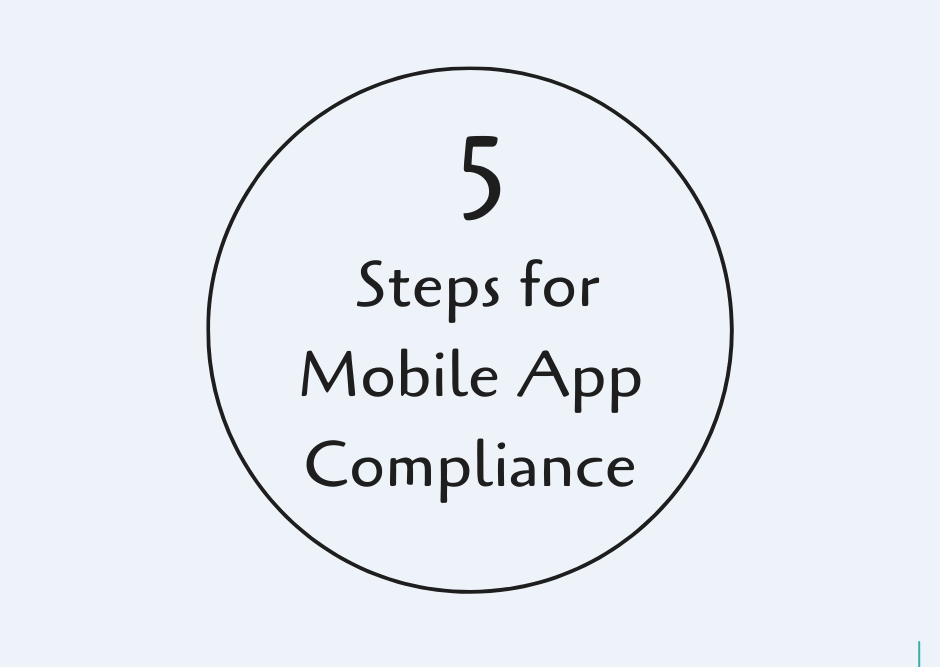Service workers are powerful client-side scripts that enable features like offline access, push notifications, and background synchronization for Progressive Web Apps (PWAs). However, if not implemented securely, they can pose significant risks, such as:
- Cross-Site Scripting (XSS) Attacks: Attackers can inject malicious scripts into your service worker, accessing sensitive user data or hijacking sessions.
- Man-in-the-Middle (MITM) Attacks: Attackers can intercept communication between your service worker and server, eavesdropping, modifying, or injecting malicious data.
- Insecure Network Requests: Unencrypted network requests can allow attackers to intercept or modify data in transit.
- Cache Poisoning: Attackers can inject malicious data into your service worker's cache, which is then served to users.
To mitigate these risks, follow these best practices:
Best PracticeDescriptionSecure RegistrationRegister service workers over HTTPS to encrypt communicationSet Scope and PermissionsLimit service worker access to necessary resources and dataValidate and Sanitize InputPrevent XSS attacks and data injection by validating user inputSecure CachingUse secure caching mechanisms like Cache API and implement cache expiration policiesMonitoring and Incident ResponseMonitor service workers, have an incident response plan, and conduct regular security audits
By prioritizing service worker security, you can ensure a safe and secure user experience for your PWA, protecting your users' data and preventing potential attacks.
How Service Workers Work
Service Worker Lifecycle
A service worker's lifecycle consists of three main events: installation, activation, and fetch. Understanding these events is crucial for implementing service workers securely.
Installation
- The service worker is registered and cached.
- This is the ideal time to cache static assets, such as HTML, CSS, and JavaScript files.
- The
installevent is triggered, and the service worker can perform tasks like caching and setting up push notifications.
Activation
- The service worker is activated, and it takes control of the page.
- The
activateevent is triggered, allowing the service worker to clean up any previous service workers and set up its own environment.
Fetch
- The
fetchevent is triggered when the page makes a network request. - The service worker can intercept and manipulate these requests, allowing it to cache resources, handle offline requests, and more.
Caching and Security Risks
Caching is a critical aspect of service workers, as it enables offline access and improves performance. However, improper cache handling can lead to security vulnerabilities.
Cache Poisoning
Cache poisoning occurs when an attacker injects malicious data into the cache, which is then served to users.
Secure Caching Practices
To mitigate cache poisoning, implement the following secure caching practices:
PracticeDescriptionValidate and sanitize cached dataEnsure data is clean and free from malicious codeUse secure caching mechanismsUtilize mechanisms like Cache API to store data securelyImplement cache expiration and eviction policiesRegularly update and remove outdated cache dataMonitor cache performance and securityKeep an eye on cache performance and security to detect potential issues
By understanding the service worker lifecycle and caching mechanisms, you can implement service workers securely and mitigate potential security risks. In the next section, we'll explore common security threats and how to protect your application from them.
Common Security Threats
Service workers can introduce new security risks to your Progressive Web App (PWA) if not implemented correctly. Be aware of the following common security threats:
Cross-Site Scripting (XSS) Attacks
What is it? XSS attacks occur when an attacker injects malicious scripts into your service worker, allowing them to access sensitive user data or take control of the user's session.
How to prevent it?
- Validate and sanitize all user input
- Use Content Security Policy (CSP) to define which sources of content are allowed to execute within your application
Man-in-the-Middle (MITM) Attacks
What is it? MITM attacks occur when an attacker intercepts communication between your service worker and the server, allowing them to eavesdrop, modify, or inject malicious data.
How to prevent it?
- Ensure all communication between your service worker and server is encrypted using HTTPS
Insecure Network Requests
What is it? Insecure network requests can allow attackers to intercept or modify data in transit.
How to prevent it?
- Make all network requests over HTTPS
- Use the
fetchAPI to make requests to trusted origins only
Cache Poisoning
What is it? Cache poisoning occurs when an attacker injects malicious data into your service worker's cache, which is then served to users.
How to prevent it?
Prevention MethodDescriptionValidate and sanitize cached dataEnsure data is clean and free from malicious codeUse secure caching mechanismsUtilize mechanisms like Cache API to store data securelyImplement cache expiration and eviction policiesRegularly update and remove outdated cache dataMonitor cache performance and securityKeep an eye on cache performance and security to detect potential issues
By understanding these common security threats, you can take steps to protect your PWA from potential security risks and ensure a safe and secure user experience. In the next section, we'll explore how to implement service workers securely.
Secure Service Worker Implementation
When implementing service workers in your Progressive Web App (PWA), it's crucial to prioritize security to protect your users' data and prevent potential attacks. In this section, we'll explore the best practices for secure service worker implementation.
Setting Scope and Permissions
To minimize exposure to attacks, set limits to the scope and permissions of your service worker:
- Register your service worker with a specific scope, ensuring it only has access to necessary resources and data.
- Define clear permissions for your service worker, restricting its ability to perform certain actions or access sensitive information.
- Use the
Service-Worker-Allowedheader to specify the allowed scope for your service worker.
Scope and PermissionDescriptionSpecific scopeLimit access to necessary resources and dataClear permissionsRestrict service worker actions and access to sensitive informationService-Worker-Allowed headerSpecify allowed scope for service worker
Secure Registration and Updates
To prevent man-in-the-middle attacks, ensure secure registration and updates of your service worker:
- Register your service worker over HTTPS, ensuring all communication between the client and server is encrypted.
- Validate the authenticity of your service worker script, using techniques such as code signing or hash validation.
- Implement a secure update mechanism, using features like
updateViaCacheto ensure updates are fetched securely.
Secure Registration and UpdatesDescriptionHTTPS registrationEncrypt communication between client and serverScript validationValidate service worker script authenticitySecure update mechanismEnsure updates are fetched securely
Handling Sensitive Data
When handling sensitive data in your service worker, prioritize security and encryption:
- Encrypt data in transit using HTTPS, ensuring all communication between the client and server is secure.
- Implement secure storage strategies, such as using IndexedDB with encryption or storing sensitive data on a secure server.
- Validate and sanitize user input, preventing potential XSS attacks or data injection.
Handling Sensitive DataDescriptionHTTPS encryptionEncrypt data in transitSecure storage strategiesImplement secure storage for sensitive dataInput validation and sanitizationPrevent XSS attacks and data injection
By following these best practices for secure service worker implementation, you can ensure a safe and secure user experience for your PWA, protecting your users' data and preventing potential attacks.
Offline Security Considerations
When building Progressive Web Apps (PWAs) with service workers, it's crucial to consider offline security to protect user data. In this section, we'll explore key security considerations for service workers in offline scenarios.
Data Protection
In offline mode, service workers must ensure the integrity and confidentiality of user data. To achieve this, implement robust encryption mechanisms, such as AES, to protect sensitive data.
Authentication
Offline authentication is critical to prevent unauthorized access to user data. Implement robust authentication mechanisms, such as OAuth2 and OpenID Connect, to ensure that only authorized users can access sensitive data.
Secure Caching
Caching is essential for offline functionality, but it also introduces security risks. Implement secure caching mechanisms, such as cache validation and versioning, to prevent cache poisoning attacks.
Input Validation
In offline mode, input validation is crucial to prevent XSS attacks and data injection. Implement robust input validation mechanisms to ensure that user input is clean and safe to process.
Offline Security ConsiderationsDescriptionData ProtectionEncrypt sensitive data using mechanisms like AESAuthenticationImplement robust authentication mechanisms like OAuth2 and OpenID ConnectSecure CachingImplement cache validation and versioning to prevent cache poisoning attacksInput ValidationValidate user input to prevent XSS attacks and data injection
By prioritizing these offline security considerations, you can ensure a safe and secure user experience for your PWA, even in offline scenarios. Remember, security is an ongoing process, and regular security audits and updates are essential to stay ahead of potential threats.
sbb-itb-8abf120
Monitoring and Incident Response
Monitoring and incident response are crucial aspects of service worker security. They help identify and mitigate potential security breaches, ensuring the integrity of your Progressive Web App (PWA) and protecting user data.
Regular Security Assessments
Regular security assessments help identify vulnerabilities in your service worker implementation. This includes:
- Log monitoring: Review logs regularly to detect unusual activity, such as unexpected requests or errors.
- Security audits: Perform regular security audits to identify vulnerabilities and weaknesses in your service worker implementation.
Incident Response Planning
Develop a comprehensive incident response plan to quickly respond to security incidents, minimizing the impact on your PWA and users. This plan should include:
- Incident detection: Quickly identify and detect security incidents, such as unauthorized access or data breaches.
- Incident response: Respond promptly to security incidents, following established procedures to contain and mitigate the incident.
- Post-incident activities: Conduct a thorough analysis of the incident, identifying root causes and implementing measures to prevent similar incidents in the future.
Monitoring and Incident ResponseDescriptionLog monitoringReview logs regularly to detect unusual activitySecurity auditsPerform regular security audits to identify vulnerabilitiesIncident detectionQuickly identify and detect security incidentsIncident responseRespond promptly to security incidents, following established proceduresPost-incident activitiesConduct a thorough analysis of the incident, identifying root causes and implementing measures to prevent similar incidents
By prioritizing monitoring and incident response, you can ensure the security and integrity of your PWA, protecting your users and maintaining their trust.
FAQ on Service Worker Security
Why Use Service Workers Despite Risks?
Service workers are powerful tools that can enhance the web platform, enabling web apps to compete with native apps while maintaining the open web platform's benefits. The rest of this FAQ explains how service worker designers and implementers have mitigated the risks associated with this functionality.
Impact of Compromised Service Workers
A malicious service worker can have serious consequences for your app and users. An attacker could monitor and control all traffic between your app's backend and frontend user, sending phishing messages that compromise user data and personal information. This would damage your brand image and reputation.
Updating and Maintaining Service Workers
To minimize exposure, service workers can only be registered on pages served over HTTPS, ensuring the received service workers have not been tampered with. It's essential to prevent cyber attackers from modifying your service workers. If an attacker takes control of a service worker, they can persistently attack inbound and outbound information, known as a man-in-the-middle attack.
Service Worker RisksDescriptionMalicious service workerMonitor and control all traffic between app's backend and frontend userPhishing messagesCompromise user data and personal information, damaging brand image and reputationMan-in-the-middle attackPersistently attack inbound and outbound information
By understanding these risks and taking steps to mitigate them, you can ensure the security and integrity of your Progressive Web App (PWA) and protect your users.
Summary of Best Practices
In this guide, we've covered the essential security best practices for service workers in Progressive Web App (PWA) development. To recap, prioritizing service worker security is crucial to protect your app and users from malicious attacks. Here's a summary of the key takeaways:
Secure Service Worker Implementation
Best PracticeDescriptionRegister on HTTPSEnsure service workers are registered on pages served over HTTPSSet Scope and PermissionsDefine the scope of your service worker to only cover necessary files and resourcesHandle Sensitive DataImplement proper caching and storage APIs to handle sensitive data securely
Monitoring and Incident Response
Best PracticeDescriptionRegularly MonitorMonitor your service workers for suspicious activityIncident Response PlanHave a plan in place to quickly respond to security breaches
By following these best practices, you can significantly reduce the risk of service worker-related security threats and ensure a safe and secure experience for your users. Remember, security is an ongoing process that requires continuous monitoring and improvement.
FAQs
How Long Does a Service Worker Last?
A service worker can last for a maximum of 30 seconds if it's idle. If a worker is busy running synchronous JavaScript, Chrome will terminate it if it doesn't respond to a ping within 30 seconds. Additionally, Chrome detects long-running workers and terminates them if an event takes more than 5 minutes to settle.
Why Use Service Workers Despite Risks?
Service workers are powerful tools that enable web applications to run offline or with intermittent connectivity. They make the web platform more viable, allowing web apps to compete with native apps while retaining the open web platform's benefits.
Impact of Compromised Service Workers
A malicious service worker can have serious consequences for your app and users. An attacker can monitor and control all traffic between your app's backend and frontend user, sending phishing messages that compromise user data and personal information. This can damage your brand image and reputation.
Updating and Maintaining Service Workers
Update CheckDescriptionBrowser Update CheckThe browser performs an update check after any navigation using the Service Worker.HTTP CacheThe HTTP cache is invalidated every 24 hours.Spec ChangeAccording to a recent spec change, browsers will revalidate the HTTP cache for SW scripts unless the site opts into using the cache. Chrome does not yet adhere to this new part of the spec, but will soon.








